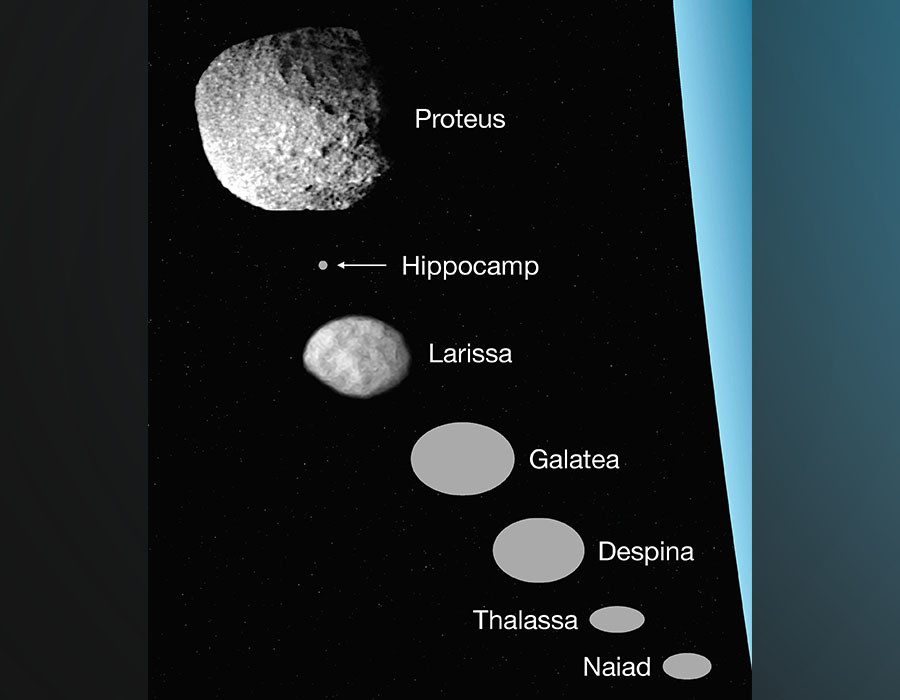Astronomers confirmed the existence of the fourteenth, the smallest satellite of Neptune. The object received the name of a creature from ancient Greek mythology - Hippocampus. According to the legend, these semi-half-half-fish were harnessed to the chariot of the god of the sea, Poseidon, which Neptune corresponded to in Roman mythology.
“Neptune’s internal moons are named after mythological sea creatures. The International Astronomical Union assigned to its fourteenth satellite the name "Hippocampus" by the name of a half-horse-half-fish, on which the god Neptune was often depicted on Roman mosaics, ”said study author Mark Showalter of the SETI Institute (USA).
For the first time, scientists noticed a tiny satellite in images taken with the Hubble telescope in 2013. However, only now the researchers were able to ascertain their discovery, determine the characteristics of the space object and understand its origin.
The hippocampus is the seventh most remote from Neptune and is located at a distance of about 105.250 km from it. The period of its circulation around the ice giant is about 23 hours.
- Dimensions of the Hippocampus relative to other satellites of Neptune
- © Mark R. Showalter / SETI Institute
According to the researchers, the hippocampus is a fragment of Proteus, the second largest satellite of Neptune. The orbits of these two objects are separated only 12 thousand km. Scientists have concluded that the Hippocampus was formed as a result of the collision of Proteus with a comet. This theory is also supported by the fact that there is a large impact crater on the surface of Proteus. Obviously, in the distant past, the satellite collided with a large celestial body.
This version of the origin of the Hippocampus is confirmed by the location of the two satellites relative to each other and Neptune. Scientists found out that Proteus is very slowly moving away from the ice giant due to tidal acceleration - just as the moon moves away from the Earth. Astronomers concluded that 4 billion years ago, after the birth of the solar system, Proteus was about 10 thousand km closer to Neptune than it is now.
“If we try to imagine what the modern satellite system of Neptune was 4 billion years ago, the Hippocampus and Proteus will be practically at one point,” said Showalter.
At the same time, the authors of the study did not rule out that even more miniature satellites could be in orbit of Neptune than the Hippocampus. According to scientists, the James Webb space telescope (James Webb), which in a few years will replace Hubble, will help to figure it out.

